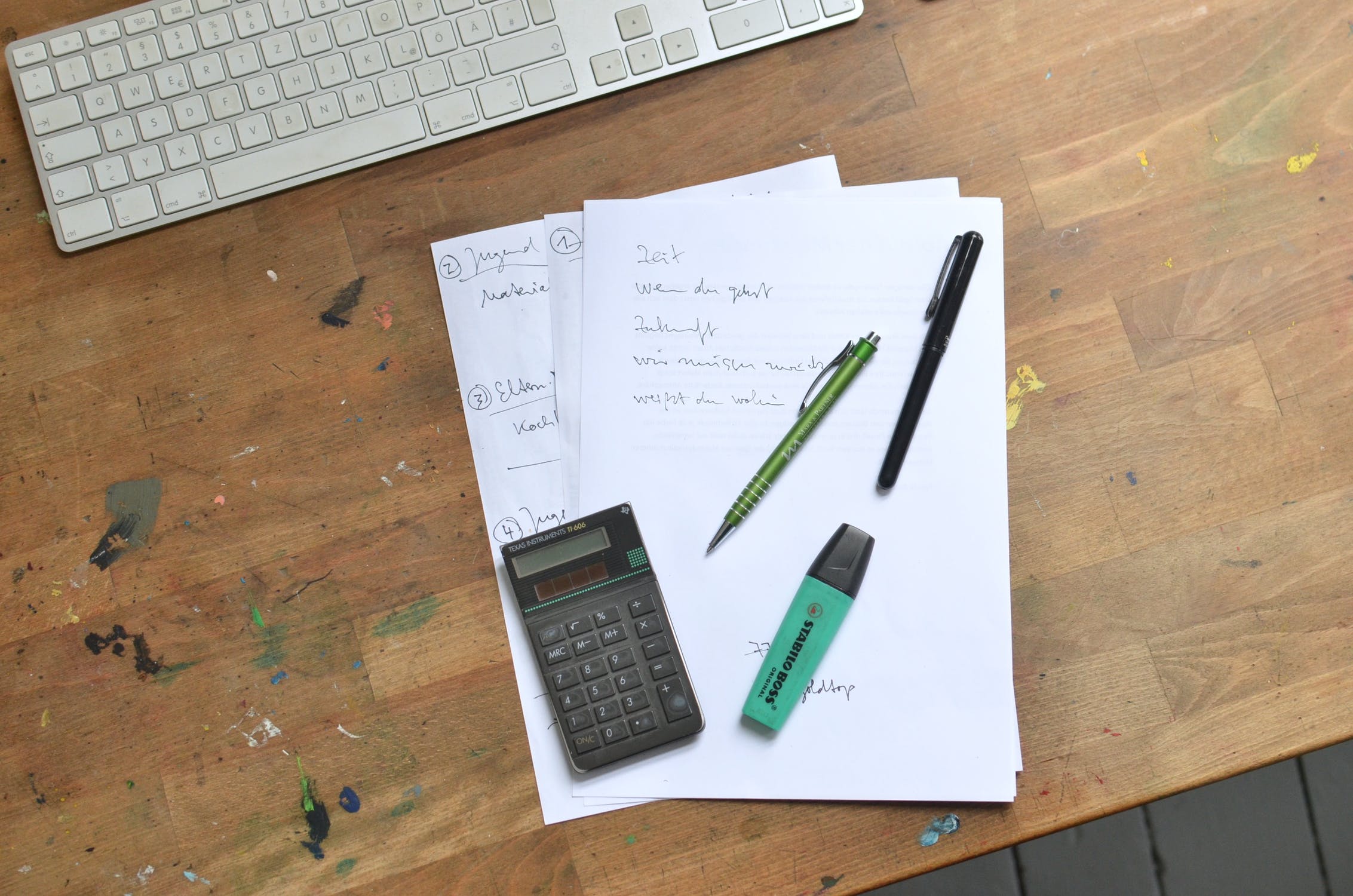Fixed Price vs. Time and Material: How to Charge Clients?

Like most freelancers and small business owners, you’ve probably agonized over a simple question: “How much do I charge for my services?”
On the surface, it seems like a simple question. You know there’s going to be some variation between you and other freelancers due to your location, experience level, and skills, but you may never feel like you come up with a good number. When a client declines to work with you, you always wonder if it was because of your price. Were you too expensive for their budget? Or were you so cheap that they worried about quality?
Plus, it’s in the interest of both parties to come up with an accurate figure. If the number is too high, the client will feel like you’re taking advantage of them. If the number is too low, you won’t feel properly compensated for your work.
So how do you come up with good prices to charge your clients? There are basically two models: fixed pricing and time-and-materials pricing. Each model comes with advantages and disadvantages, so you’ll need to choose the one that works best for you, but in this article we’d like to give you an overview of both options to help you decide.
Keep in mind, however, that you aren’t bound to one system or the other. Feel free to switch between these pricing models based on the types of clients you serve and the projects you work on. Now let’s explore fixed price vs. time and materials pricing.
Like most freelancers and small business owners, you’ve probably wondered how much to charge for your services. Share on X
Fixed Price

Fixed pricing (or a fixed price contract, as some people call it) is when you deliver a product or service for a simple price that never changes. It may be paid in installments and usually requires a down payment to get started. Some freelancers break down the payments by date or project milestones. You can collect money at any time or in any way, but the final total amount doesn’t change.
For instance, if you offer to build a website for $5,000, you’ve given a fixed price. Your material and time costs won’t change the price. If the website ends up taking twice as long as you expected, the price remains the same. But if you have the experience and tools to build the website quickly, you might make a lot of money.
Let’s talk about the pros and cons of fixed pricing.
Pros of fixed pricing
- You know exactly how much you’ll make at the end of the project. Knowing this figure can smooth out your cash flow and eliminate some stress from your life. This is helpful if you have financial responsibilities, like a family or property.
- Clients like this kind of pricing because it’s easier for them to budget. They know exactly what it will cost in the end, giving them more control over how they charge their clients and customers.
- Clear prices allow clients to take risks with less-experienced freelancers. They don’t have to worry if the project takes longer or will need more revisions – as long as they are happy with the final price.
- This method is great for simple projects with a clear scope that can be turned around quickly (e.g. building a website from a template).
- These accounts are usually easier to manage because the client doesn’t worry about whether you’re using time efficiently. If the project is completed to the agreed-upon standards, they don’t care how long it takes.
- Negotiations are generally simpler and shorter. The client only needs to decide if they are comfortable paying the final price.
Cons of fixed pricing
- Unexpected costs can eat into your profits. In some cases, too many costs could make you lose money on the project. For instance, if you forget to factor the price of materials into your price, you’ll have to eat that loss.
- Time is a cost as well. Projects that take longer than expected will erode your margin.
- Clients will always expect similar costs on future projects, even if those projects take more time or require more materials. “I paid $200 for my last poster,” they might say. “Why does this poster cost $300?”
- You and the client must come to a very detailed agreement about what the project includes. Some clients may grow upset when you refuse to increase the scope of the project without increasing the price. You might also need to add a buffer into your original price if you expect the client to expand the scope in the future.
Who is it for?
Fixed pricing is only right when you have a clear idea of the project’s requirements, as an unexpected obstacle, challenge, or delay could disrupt your whole invoice. If the client isn’t sure what they want or can’t articulate their needs, it’s best to stay away from this pricing system because there’s a good chance your price will be inaccurate.
It’s also useful when the client is upfront about their budget and you can tailor a service to meet those needs. If the client only has $1,000/month for blog content, you can plan the kind of content that respects that limit without overextending yourself. Knowing the final total ahead of time gives you total control over the project.
How to do it right

First, in order to use fixed pricing well, it’s important to only use it on projects that you understand well and have experienced in the past. If you’re uncertain about how long a project should take, it’s best to use the time and materials pricing model until you’re comfortable with it.
If you’re new to print design, you probably don’t know how long it will take you to design a poster, so it’s smarter to use the time and materials method. Over time, you’ll get a better handle on what it takes for each type of project. You can eventually switch to the fixed pricing method.
Second, the fixed pricing method requires that you anticipate your expenses. You won’t list these out individually on your invoice, but your figure should account for all costs. There are two kinds of expenses to consider:
- Direct expenses. These are costs that come directly from the project. If you’ve been commissioned to paint a canvas, the canvas and your paints are direct expenses.
- Indirect expenses. These are costs that don’t clearly relate to the project, but must be paid. Your portfolio site’s web hosting fees, for example, have to be paid by someone, so they should represent a small part of every job.
Next, estimate how long you think the project will take to complete. You won’t use your time as a basis for pricing, but you should at least use this method to come up with a bottom number. For instance, if a project will take 12 hours and you typically bill at $75/hour, you must at least charge $900+ your expenses.
If you can quantify your time, try to be as conservative in your own favor as possible. Add in a few buffer hours for good measure. Expect that the two-hour job will take three hours. Expect the 18-hour job to take 23 hours.
But since you’re using the fixed price method, your final number doesn’t have to be a function of your time spent and hourly rate. You can add as much as you like based on the value you’re providing to the client.
For instance, you may only want to charge $2,000 to set up an ad campaign, but if you expect that ad campaign to create $500,000 in revenue, you should charge much more because it creates a lot of value. That client will be happy to spend $10,000 or $15,000 to make half a million. This is called value-based pricing and it’s a key technique of some of the most successful freelancers.
Most importantly, it’s smart to streamline your fixed-price projects as much as possible by using tools that save money and time. Create your own website templates, load custom Photoshop actions, employ copywriting frameworks, etc. The less time you spend on a fixed-price project, the more you’ll earn.
Time and Materials

Time and materials pricing is substantially different from fixed pricing, but it’s still a suitable billing method for many freelancers and types of projects.
Charging for time and materials is when you bill the client for all of your expenses plus an hourly rate. The hourly rate is based on the real time it takes to complete the project. For instance, if you agree to edit a podcast episode, you might lay out your invoice like this:
- Music license: $55
- Graphics license: $125
- 6 hours at $100/hour: $600
- Total: $780
Pros of Time and Materials Pricing
- You get paid for your time regardless of how long the project takes. If the job unexpectedly requires double the time investment, you get paid double.
- The client can change the scope and specifications of the project at any time, as long as they understand they’ll have to pay you for the additional work and material costs. This makes it a highly flexible model that suits clients who aren’t 100% sure what they need.
- You usually don’t have to go through complex and tedious bidding processes. If a client is satisfied with your rate, you can start working right away.
- If the client needs you to stop working suddenly (perhaps their priorities change or their budget gets cut), there’s no harm to you. You simply send your final invoice for the hours worked along with whatever work you’ve completed. You should always be paid because your compensation isn’t tied to the final product.
Cons of Time and Material Pricing
- You may bill too many hours and exceed the client’s budget. This creates a tense situation where the client either fights you on the invoice total or is forced to find more money. Neither outcomes are good for the ongoing relationship.
- Clients may feel the need to micromanage your time, especially if you aren’t working on their site (like most freelancers). They might fear that you aren’t using your time efficiently and padding the hourly count. At the end of the day, there’s an element of trust here that you’ll just have to build.
- You may need to fight the temptation to pad your hours. Even the most honest freelancers have to resist the urge to round up a little here or bill for time that doesn’t exactly fit into the project.
Who is it for?
Time and materials pricing is best for any project where you can’t accurately predict the time investment. This includes writing, artistic work (like web designs, videos, or print materials) and software development.
Use time and materials pricing on long-term projects with dynamic requirements. For instance, a client may want you to start working on their website before they know how many pages you’ll need to build. Since you can’t predict the scope of the job, you can’t give them a fixed price.
Most importantly, this is a good billing system if you’re a new freelancer who isn’t comfortable giving out prices yet because you don’t know a) how long jobs take and/or b) the value of your skills. It’s simpler and safer for everyone if you just say, “I’m $50/hour plus expenses.”
How to do it right

There are two components to charging by time and materials: 1) Coming up with the right hourly rate and 2) being accurate and transparent with your time.
Calculating your freelance hourly rate is a big topic, but generally it makes sense to start with the amount you expect to make and work backwards. If you want to earn $100,000/year, for instance, you would have to charge about $48/hour if you planned to work 40 hours/week for all 52 weeks of the year.
But you won’t work that much. You’ll need sick and vacation time. Plus you won’t bill for 40 hours/week. Some of that time will be spent sending proposals, managing your accounting, and marketing your business. It’s not all billable time.
So if you plan for two weeks of vacation, a week of sick time / personal time, and about 30 hours of billable work each week, you would have to charge about $68/hour to earn $100,000/year.
That’s quite a difference, but only if you never take off holidays, never spend days traveling, automate as many tasks as possible, and have a full pipeline of work. Realistically, you need to charge around $85/hour to make your $100K.
If you aren’t comfortable making that calculation yourself, look at successful freelancers who work on projects similar to yours. Ask them what they charge for their work and whether they think that number suits them.
Once you know your rate, your next step is to manage your time. Being honest and transparent about your time is good for you and the client, so you’ll want to take steps to keep everything simple and clear. But you don’t want to spend a lot of time on this. If you spend one to three hours per week just tracking your own time, you’ll have to raise your rate that much more.
The solution is time tracking software. This kind of tool tracks your time in every application while you work on projects so you have an accurate record, but only if you use the right tool.
Timing records your time automatically without your involvement. It shows when you worked on what. The smart timeline shows you exactly what you did at any given time, including which app, document, or website you were using. The dashboard gives you a great overview of how your time is distributed across your apps and projects and produces reports that you can send over to your clients as evidence for your invoice.
Timing is the first time-tracking app that saves you time. Grab Timing’s free trial now.
![]()
Wrap Up
In this article, we explained fixed price vs. time and material pricing. We laid out the pros and cons of each pricing method and gave you tips to use them well. Now it’s up to you to decide which method you’ll use on your projects.
Remember: You can switch and use whichever method is right under the given circumstances. Don’t forget to stick up yourself. Be assertive if a client resists your price. You don’t have to accept less just because the client asks to pay less. You’re in business for yourself, which means looking out for yourself.
